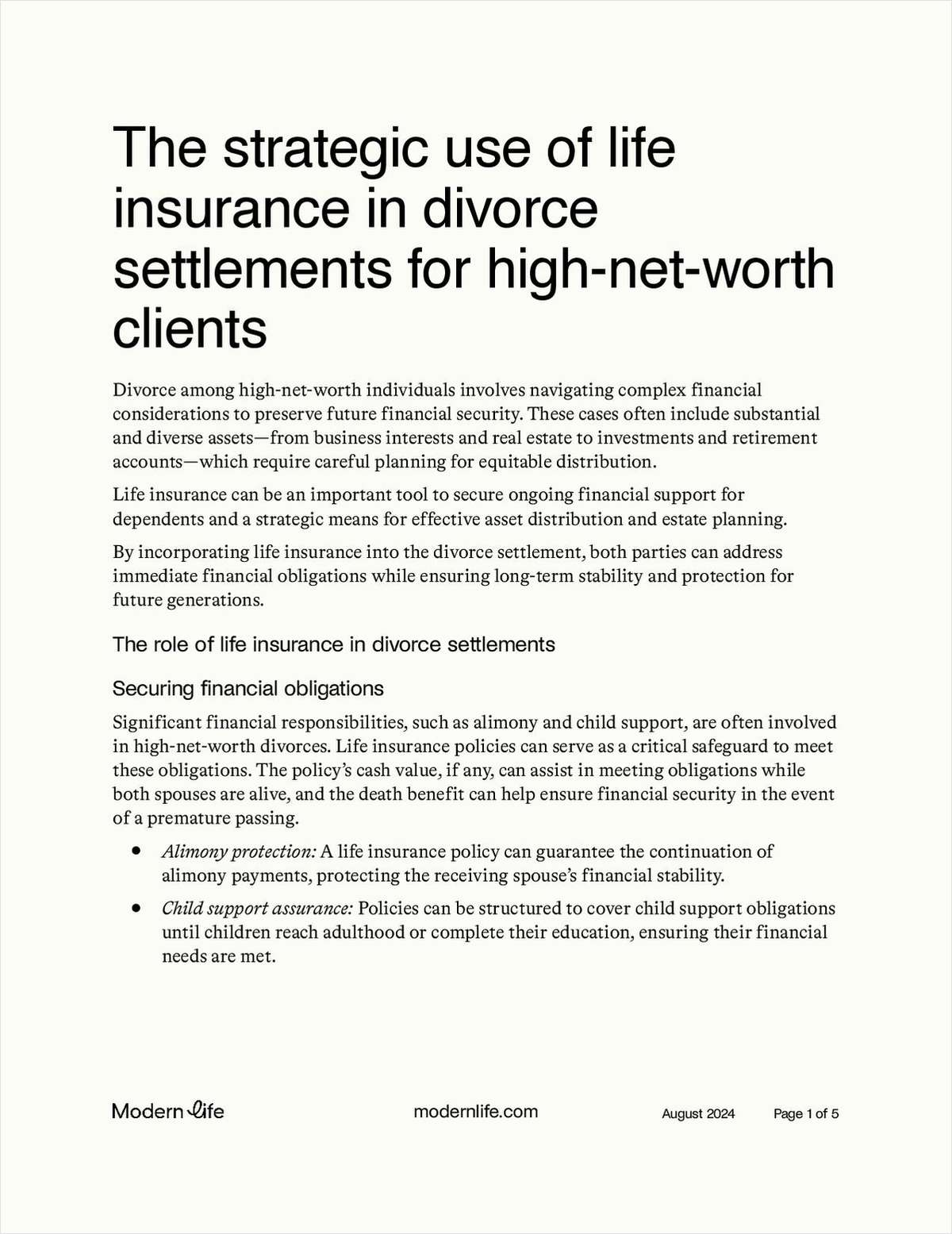The life reinsurance market is stable and strong, although shrinking cession rates may impact business going forward and compel reinsurers to look for ways to boost revenue, according to all major rating agencies that put out reports in September.
While the sector is enjoying improved profits, lower cession rates as well as slow growth may "put the squeeze" on profits in the future, according to a report by Standard & Poor's Corp., New York, titled "Life Reinsurers May Feel The Squeeze As Cessions Shrink."
The report cites a study by the Society of Actuaries, Schaumburg, Ill., which says that the cession rate, the rate at which contracts are assumed by reinsurers, fell to 40% in 2006, a significant drop over the earlier part of the decade. In 2000, data provided by Swiss Re Life & Health America, Stamford, Conn., indicated that cession rates stood at 59%.
Pricing is one reason for the change, with reinsurers leaving behind "irrationally low" prices in order to meet "aggressive competition" that existed in the marketplace several years ago, according to S&P. But, according to the report, "reinsurers have now come back to their senses."
Other reasons for reduced capacity, according to the S&P report, include deployment of costs and capital to cover Triple-X reserves, industry consolidation and subsequent redeployment of capital to non-life reinsurance. The upside, according to the report, is "far better profit margins on newer business" offset by "business that is harder to come by."
Cedants, direct writers who reinsure contracts that they have sold, are responding by retaining more of the business that they write, using a captive reinsurer to accept excess reserve needs and collateralizing letters of credit, the report says.
The report also notes that the reduction of regulatory capital requirements in the United Kingdom may result in increased retention of mortality risk by direct writers.
Analysts with Moody's Investors Service, New York, also note the shift in the market.
Firmer pricing is increasing reinsurers' profitability and increasing retention rates, according to Laura Bazer, a Moody's vice president and senior credit officer, in describing changes that she notes in the market.
Scott Robinson, Moody's vice president and senior credit officer–life insurance, explains that in order to supplement growth, life reinsurers will focus on expanding their presence in more specialized products.
Among the products mentioned in Moody's 'Global Reinsurance Industry Outlook' are life insurance and annuities with secondary guarantees, equity-indexed annuities, and healthcare products.



